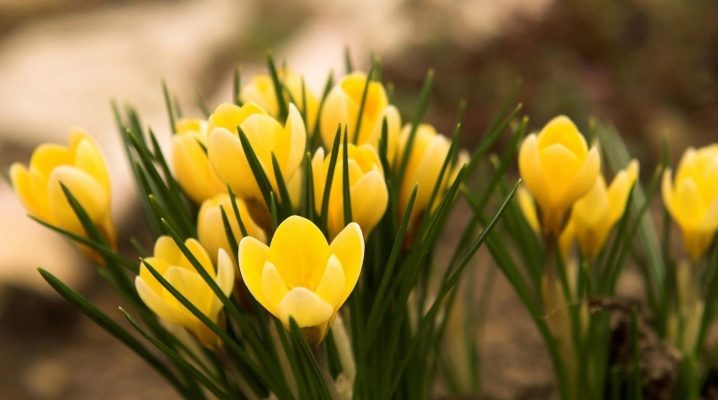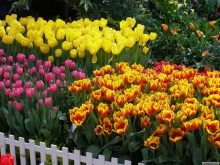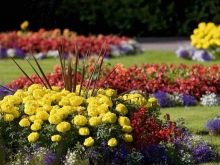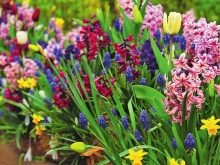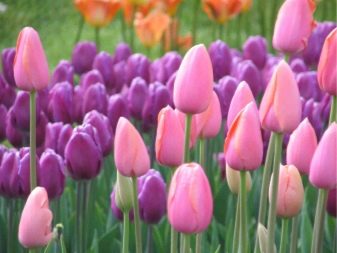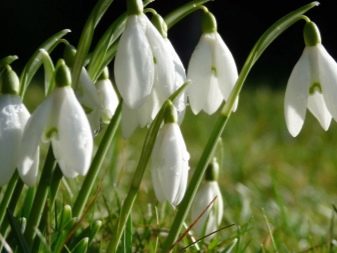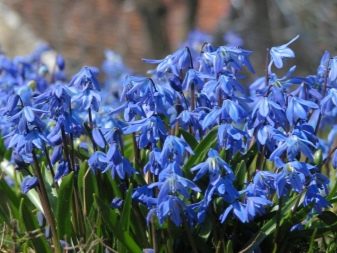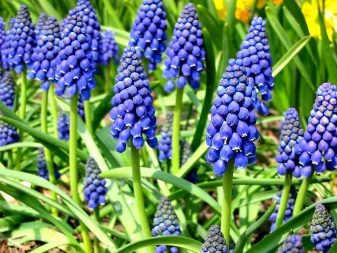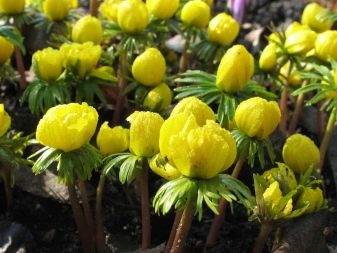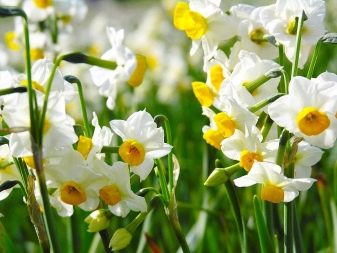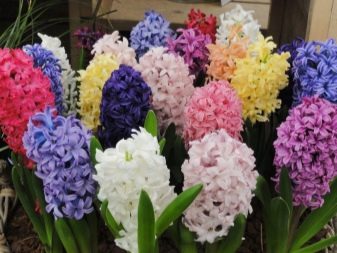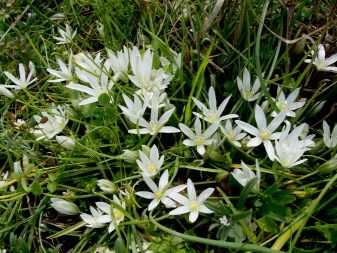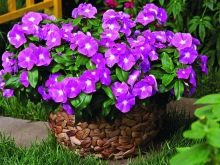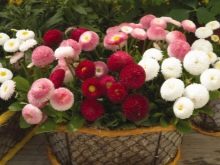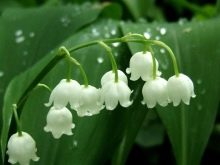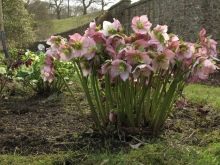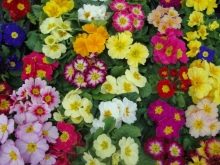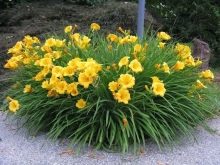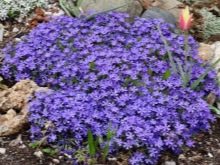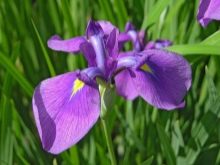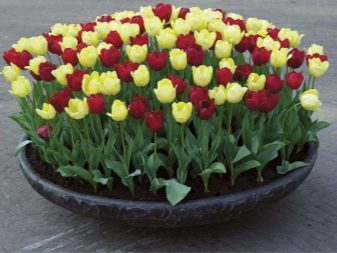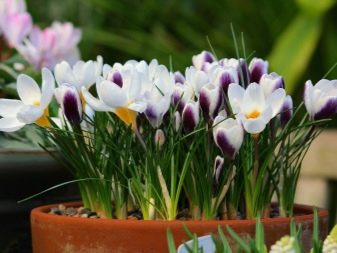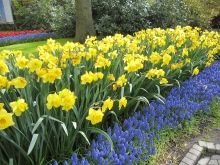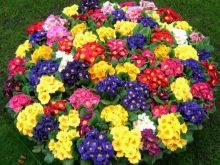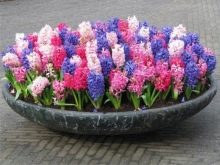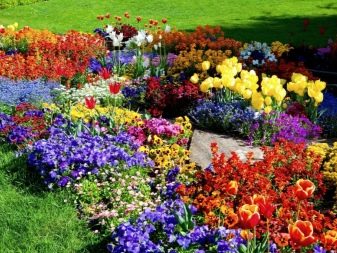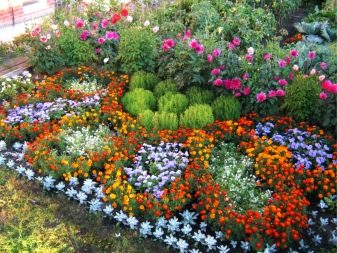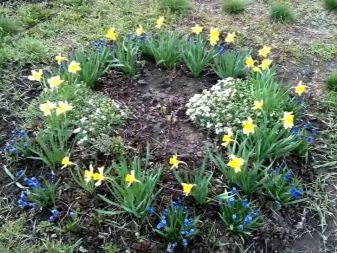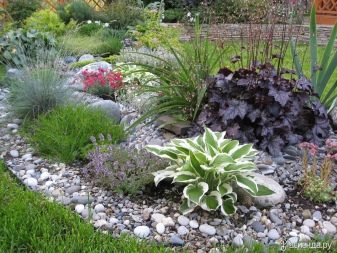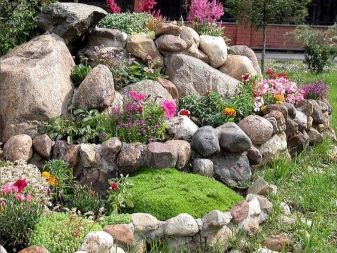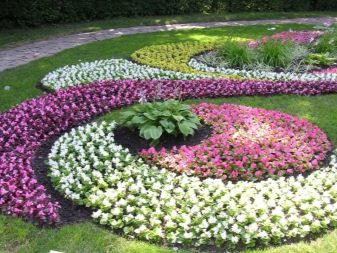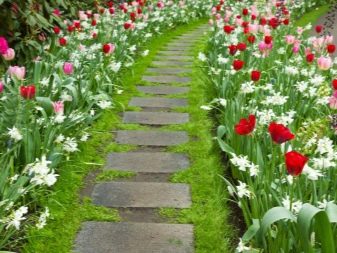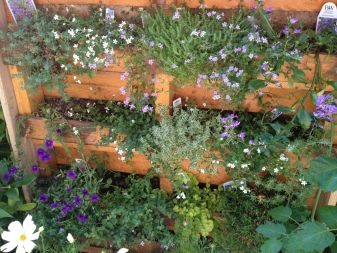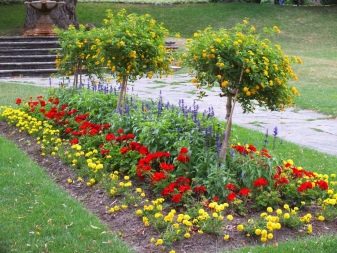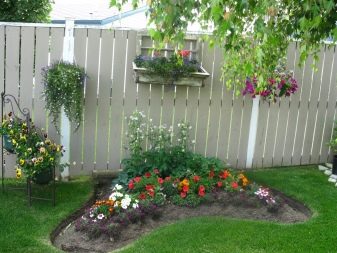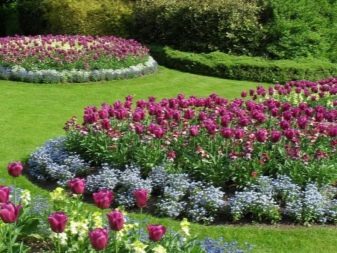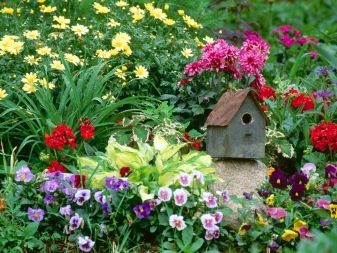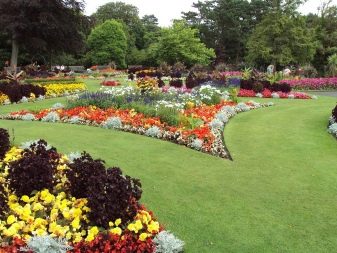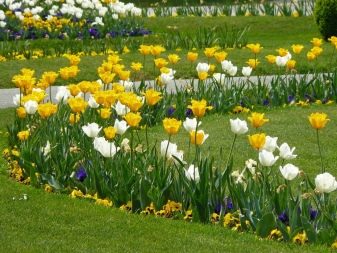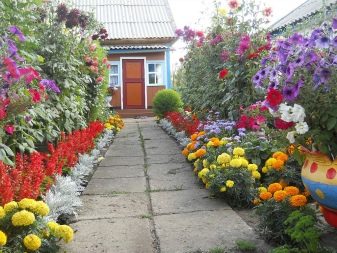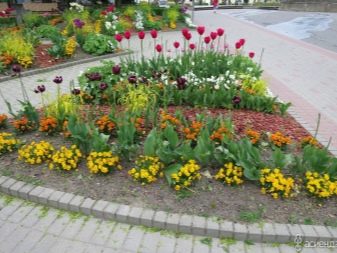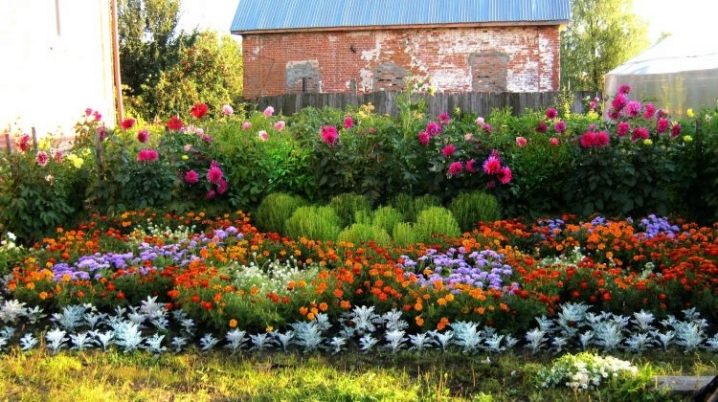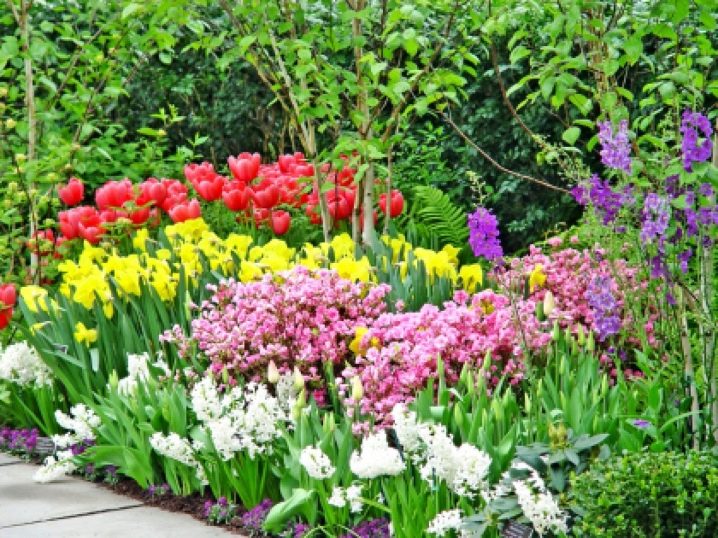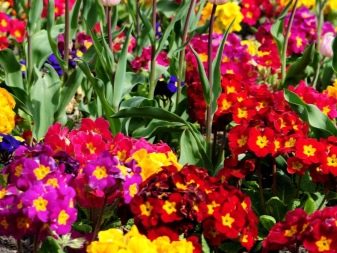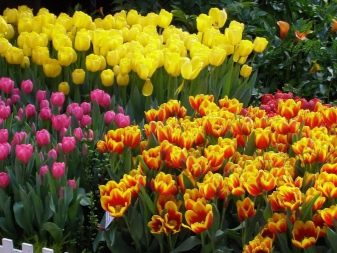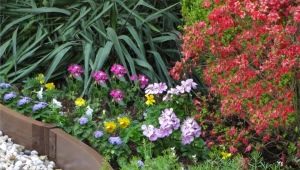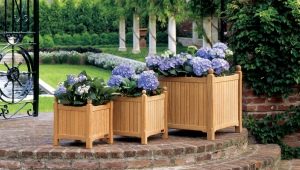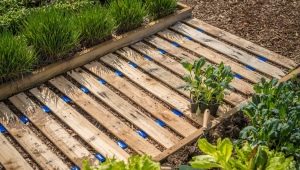Tricks of landscape design: choose flowers for spring flower beds
After a cold, dull winter, bright spring floral arrangements lift the mood of the hosts and make the guests smile. With proper design of flower beds and flower beds and the use of original solutions, you can revive your land from early spring. A small flower bed of primroses will bloom in early March, if you follow certain planting rules and recommendations.
Special features
In order for spring primroses to revive your flower bed, it is best to think about this in the summer-autumn period. At the end of summer and all autumn, all sorts of bulbous and perennial spring plants appear on the flower markets, which you can purchase.
Bulb colors include:
- Tulips. The bulbs of this flower can be planted in the fall. Perhaps this is one of the most popular ornamental plants.
- Snowdrop, another naming is galantus.This is an endangered species. To plant it in your flower garden, you need to know that it is best to plant it near the bushes and trees that do not give shade in the spring.
- Scilla, and otherwise Scylla or blue snowdrop. This seemingly delicate flower does not require special care, but loves drained loose soil.
- Muscari is a perennial, unpretentious plant. It grows quickly, multiplies rapidly, frost-resistant primrose. Because of the deep germination of his advised to plant in deep baskets or containers.
- Erantis. This bright yellow flower is not afraid of frost, does not like very wet soil, but plant it better in shady places.
- Crocus, and in another way saffron. Planted in the fall in deep containers.
- Pushkinia is very similar to the scree.
- Daffodils can be planted in any territory. They can be planted at any time of the year. It is important to thoroughly water the plants after planting.
- Hyacinth has a fragrant smell, heat-loving, happy with bright colors of different colors. Perennial plant does not like drafts.
- Bird-bird can tolerate cold, but at the same time loves the sun and loose soil.
For many years are:
- Periwinkle begins to let fresh shoots from the first spring heat.And in April, pale blue, lilac, and red flowers appear. Periwinkle loves moist soil and shade. It grows well under the conditions necessary for it. You can plant a flower at any time of the year.
- Daisy - frost-resistant small flower. Loves open sunny places.
- Lily of the valley is a symbol of spring. It should be planted in the fall. It is also a very unpretentious plant, loves moisture. It has a strong root system.
- The hellebore is an ornamental plant whose flowers remain alive for several months. These unpretentious perennials grow well in shade or partial shade.
- Primula can be planted from the first warm days of spring, begins to bloom in April. Loves scattered sunlight.
- Cineraria planted in December for seedlings. But in the late spring transplanted into a flower bed. Loves wet soil, good illumination, perfectly tolerates frosts.
- Daylily loves penumbra. Unpretentious, as soon as the snow melts, it rises.
- Creeping phlox is the most winter-hardy flowers. Totally unpretentious. Grow well in any conditions.
- Iris - light-loving plant does not like the overmoistening of the soil. The best time to plant is the end of summer.
What are common?
Each housewife has several favorite flowers with which she wishes to decorate her plot. But unfortunately, it is not always possible to find the desired plant in the market.
Therefore, there are a number of plants, of which beautiful spring flower beds most often form:
- Tulip flower bed - this is the most popular flower garden of the spring period, which usually consists of a single flower. Tulip bulbs are planted in the fall to a depth of 10-20 cm. They begin to bloom from late February to April or May, it all depends on the type and natural conditions. These bright, so attractive flower beds delight the eye for a long time. Many housewives planted several species, then the flowerbed looks even more spectacular.
- Small crocus islands are attractive for their early blooming. From afar, such a small flower garden is pleasing to the eye with its delicate bright coloring, it is seen as if a small island. Usually they are planted on the lawn, under bushes with other species of low-growing primroses.
- Narcissus flower garden looks very impressive. A huge advantage of this plant is unpretentious. Usually they are planted with tulips, since daffodils have modest thin leaves.
- A flower bed of primroses - this delicate composition of spring flowers will decorate any garden.Planted primula islands, which are located close to each other. They begin to bloom from early spring, and finish in the middle of summer.
- A small flowerbed of different types of hyacinth not only improves your mood, but also gives the garden a sweet, fragrant smell. A combination of different types and colors of this primrose will delight any guest.
Landing options
To date, landscape designers are many fashionable solutions, how to transform the site. In this regard, modern flower gardens have their own classification and names, as well as varieties of flower beds.
The style of the flower bed is:
- Landscape - this is a free style, which is inherent in the chaotic design. Plants are planted so that the impression of natural asymmetry.
- Regular is a strict style in which proportionality, symmetry, regular forms of a plant, an arrangement are observed.
There are also types of flower beds:
- Flowerbed is the most common type of design in landscape design. It is typical for her to observe the correct shape of the flower bed and small size.
- Rockery is a composition of annual and perennial conifers, which are planted so as to emphasize the terrain.
- Alpine slide is a flower garden, which is planted so as to emphasize the features of the territory.
- Arabesque - a rounded flower garden, which combines various types of spring flowers, forming a beautiful ornament.
- A mixborder is a strip of flowers that is usually planted along the path.
- Vertical flower garden (and in another wall) usually planted against the wall.
- Rabatka has a narrow long shape, adorns the tracks. Flowers are usually planted in small groups.
- Flower group planted on the background of a wall or fence. Plants are planted, depending on the ability to grow.
Tips and tricks:
- It is best to plan in advance how and where you will plant flowering plants. Therefore, it is necessary to evaluate the flowerbed from different points of the plot. The most important criterion for choosing a place for a flower bed is lighting. Since there are plants shade-loving or, conversely, loving the sun. Therefore, before planting, study the light-loving colors. But remember that flowers do not like drafts.
Prepare the soil before planting. To do this, dig a plot and loosen the ground.After that, make a scheme by which you will plant seeds or bulbs in the wells. After planting, do not forget to water the plant so that it does not dry out.
- Landscape designers recommend starting the landing with decorative, tall plants, flowers, soloists. Since all the attention will be focused on them. You can combine 3-4 favorite species. There is also an option of seating groups, one by one in different places or a combination of several species among themselves.
- After the landing of the "main" flowers, you can proceed to more stunted. It is important to plant the plants so that some fade away, while others delight the eye.
- Also, experts advise to place the flowers in color. This reception is very effective and will lead to the admiration of your guests.
- The fashionable decision for today is the garden of one flower. Such a single flower looks very good on large plots of land.
- Always looks advantageous contrast design of flower beds. The right blend will delight you even more.
- No less relevant is the flower garden, created in several tiers. For him planted flowers, different in height.When selecting flowers for flower beds, you must pay attention to the shape and size of the leaves. This is no less important point when making a flower bed.
- And in order for the flowerbed to look even smarter, you need to finish the composition with a trim. For this you can use stones, bricks, low-growing plants, ornamental grass.
Beautiful examples
The right combination of colors makes it possible to admire the flowerbed all year round.
Four Seasons Flower Garden:
- The first flowering begins in spring, for this purpose, low-growing perennials - primroses, snowdrops. They need to be placed in the foreground. Tulips and daffodils can be planted behind them, as they are taller and bloom at the first warm sunlight.
- But on the middle part of the flower bed you need to plant summer plants. After the spring buds wilt, summer flowers will begin to open.
- In the back, chrysanthemums and September bursts will look great. They can be diluted with coniferous perennial shrubs.
In such a scheme it is important to use your imagination and knowledge about flowers. Then you can translate into reality very original ideas.
Perfectly in the garden will look flowers, planted in small bunches.This very simple and convenient scheme is perfect for spring flower beds. To do this, draw a rough plan of how you will plant the seeds / bulbs, but do not forget about the order of their flowering.
For any flower bed will be a good combination of annual and perennial flowers. If your favorite flower has many species, in this case you can create a unique flower bed. For example, to use for planting different types and colors of tulips would be a bright and effective solution.
Also the primrose is rich in color variety. Small colorful islands will cheer up. Delicate crocuses can also be planted randomly or by color.
In the next video you are waiting for tips on creating a flower garden from a landscape architect.
